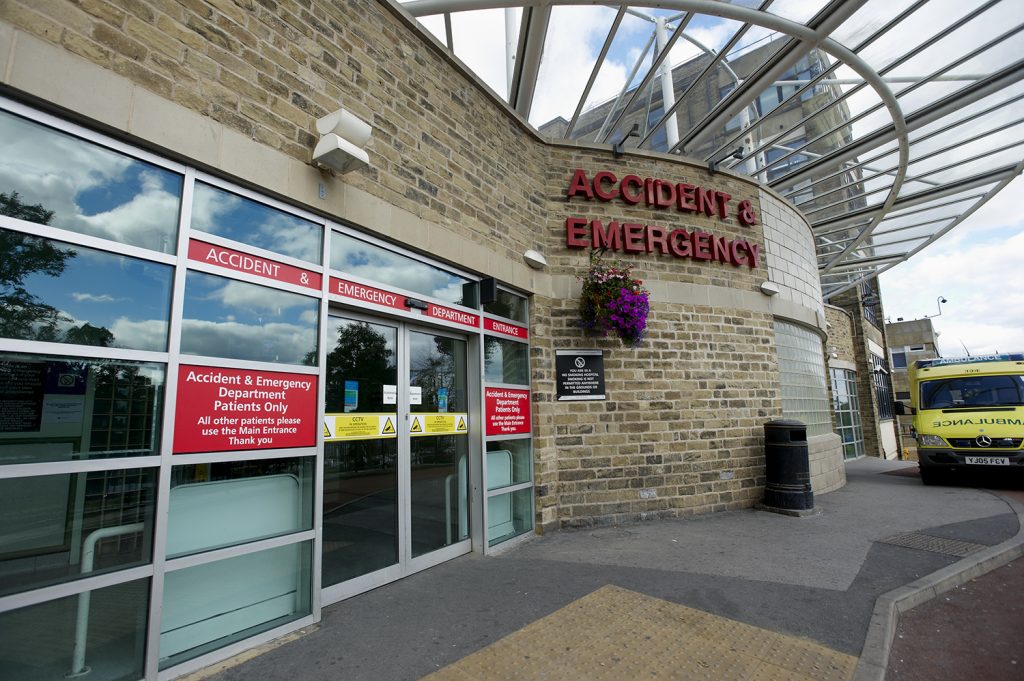
WORK is underway at Bradford Royal Infirmary’s Accident and Emergency department to create one of the country’s first negative pressure, high dependency units (HDU) as the NHS enters a ‘new normal’ with COVID-19.
The eight isolation rooms, located within the ground floor of the hospital, will use vents to create lower air pressure inside the unit than in the corridors and ensure that when the cubicle door is opened, no air escapes which lowers the risk of spreading the virus.
Dave Greenhorn, Consultant in Emergency Medicine, said: “I’m delighted that Bradford is going to be one of the first Emergency departments in England to have a HDU with separate negative pressure rooms.
“This new suite will allow us to treat any critically ill patients, but especially those patients who require specialised ventilation and aerosol generating procedures. We can treat these patients right next door to an immunocompromised patient or an influenza patient without any risk of cross contamination. Bradford has a high incidence of pulmonary tuberculosis and this unit will be perfect for managing these patients.
“The sliding glass doors and centralised high spec monitoring system will give our staff the ability to identify and respond instantly to any changes in the patient’s condition and achieve the highest possible standards of patient and staff safety. The negative pressure suite also allows us to be future-proofed as much as possible.”
Preparatory building works started in mid-February and will continue until at least late summer.
Isolate patients
Simon Kirk, General Manager of BRI’s Urgent and Emergency Care Clinical Business Unit, said: “Negative pressure rooms are a common method of infection control and are used to isolate patients with contagious, airborne diseases such as measles, tuberculosis, SARS, MERS, and COVID-19.
“The rooms aim to keep patients with infectious illnesses, or patients who are susceptible to infections from others, away from other patients and healthcare colleagues.
“The new unit will also allow the department to be more flexible with our bed base as we continue to care for COVID-19 patients in this era of a ‘new normal’.”
The refurbishment will cost £1.3m and forms part of a £9.15m investment in the BRI site by Bradford Teaching Hospitals NHS Foundation Trust and NHS Improvement.
Mark Holloway, Director of Estates and Facilities, said: “I’m delighted that our emergency department’s HDU is receiving this upgrade as we look to the future to ensure our patients have world-class facilities to receive cutting-edge care in this new COVID-19 era.
“One of our great strengths here in Bradford is that we, as a Trust, react quickly to new healthcare scenarios presented to us and can adapt our estate and our working practices to meet the changing needs and rising demand the NHS will face during the next decade and beyond.”
While the work is ongoing, the department has been reconfigured and HDU patients are currently being accommodated in its central area.
How do negative pressure rooms work?
They are called negative pressure rooms because the air pressure inside the room is lower than the air pressure outside the room. This means that when the door is opened, potentially contaminated air or other dangerous particles from inside the room will not flow outside into non-contaminated areas.
Instead, non-contaminated filtered air will flow into the negative pressure room. Contaminated air is sucked out of the room with exhaust systems, which are built with filters that clean the air before it is pumped outside of and away from the healthcare facility.
The temperature and humidity in a negative pressure room must be monitored as the increased amount of air exchange within the room can create draughts that may be uncomfortable for a patient.
Negative pressure rooms do not have to be individual rooms for a single patient at a time. Common negative pressure environments in hospitals can include waiting areas, bathrooms, and triage areas, where infections can easily be spread.
ENDS
For further media information, please contact communications@bthft.nhs.uk or call 01274 383901